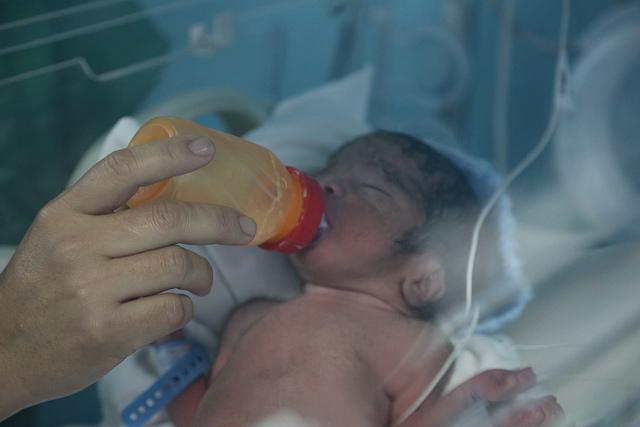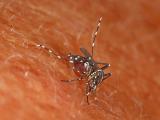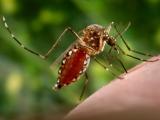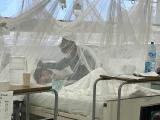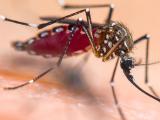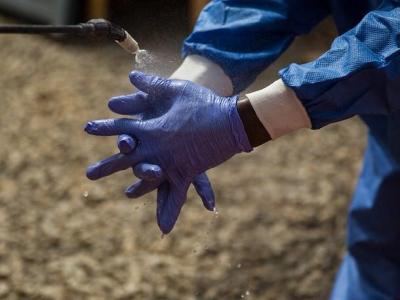Brazilian researchers today added an eagerly awaited piece of the Zika-microcephaly puzzle, publishing the first case-control study, which found a strong link between the two conditions.
In other developments, travel industry representatives, including some Florida restaurant owners from Miami's Zika-affected Wynwood neighborhood, called for Congress to approve a Zika public health funding package, revealing that a travel advisory to Wynwood may lift as early as Monday if no more local transmission is reported there.
Only 7 of 27 babies showed brain defects
The study, ordered by Brazil's health ministry, included all babies born with microcephaly in eight public hospitals in the country's Pernambuco state, a Zika hot spot, between Jan 14 and May 2. The team published its findings in Lancet Infectious Diseases. Investigators compared each of the 32 microcephaly cases they found with two controls: the first two infants born the following morning without microcephaly.
The researchers looked at blood samples from all of the babies, and they also analyzed cerebrospinal fluid (CSF) of the newborns with microcephaly. Mothers' blood was tested for evidence of Zika and dengue infection. Babies with microcephaly underwent head circumference measurement, and most had brain imaging.
Among 30 mothers of babies born with microcephaly, 24 (80%) had been infected with Zika virus. The percentage of Zika-infected mothers of babies born without the condition was surprisingly high: 64%, 39 of 61. A high percentage of mothers also tested positive for other infections, such as dengue and cytomegalovirus, but the difference between cases and controls wasn't significant.
In the babies with microcephaly, 13 of 32 (41%) had lab-confirmed Zika virus, compared with none in the 62 controls.
Of the 27 babies with microcephaly who underwent brain scans, only 7 had abnormalities, which the researchers said suggests that congenital Zika virus infection can occur without apparent brain abnormalities.
Thalia Velho Barreto de Araujo, PhD, a study coauthor who is with the Federal University of Pernambuco, said in a Lancet Infectious Diseases press release that the high proportion of Zika infections in both groups of mothers reflects the rapid spread of the virus in the region. Though Zika virus in CSF was a common finding in the babies with microcephaly, hinting at neural damage, "interestingly not all cases of microcephaly had brain abnormalities."
Researchers emphasized that their findings are preliminary and said the full case-control study will include 200 cases and 400 controls. They said the findings raise questions about the reliability of blood and CSF testing to confirm Zika virus in newborns, and they pointed out that early-pregnancy infections aren't fully understood, which might explain why 19 of the babies with microcephaly weren't confirmed as having Zika virus.
The team proposed that Zika be added to the list of congenital infections alongside toxoplasmosis, others (syphilis, varicella-zoster, parvovirus B19), rubella, cytomegalovirus, and herpes (TORCH) to become TORCHZ.
Need for better case definition
In a commentary, two experts who didn't take part in the study said the new findings might provide a missing piece of the puzzle. "Their results highlight the striking magnitude of the association between microcephaly and laboratory-confirmed Zika virus infection: the risk is 50 times higher in all microcephaly cases and more than 100 times higher in cases with brain abnormalities detected by imaging," they wrote.
The authors are Patricia Brasil, MD, with the Fiocruz Institute in Brazil, and Karin Nielsen-Saines, MD, MPH, from the department of pediatrics at the University of California at Los Angeles.
They echoed the researchers' concerns about the lack of a uniform diagnostic approach to microcephaly and added that it's becoming clearer that microcephaly is only one possible adverse outcome in a range of disorders.
New clinical information, findings from imaging studies, and critical evaluation of surveillance data will help establish a better gold standard for defining cases and improve the understanding of Zika-related birth defects, Brasil and Nielsen-Saines wrote.
Tourism concerns aired
Meanwhile, at a US Health and Human Services (HHS) briefing today to draw attention to Zika virus' impact on the US travel industry, Roger Dow, president and chief executive officer with the US Travel Association, urged Congress to be aware that urgent funding is needed to control the virus and that perceptions surrounding the continued spread have the potential to cause economic damage to the travel and hospitality industries.
He added that states can't get an adequate handle on the virus unless they have full federal resources. So far there is no evidence of long-term damage, but it's easy to imaging people deciding not to travel, Dow added.
"This isn't a partisan question. We urge Congress to act on this so the perception does not get out of hand," he said.
Two Wynwood restaurant owners expressed deep concerns about the health of their customers and the community, as well as the financial toll the travel restriction and public concerns are taking on their eateries.
Owen Bale, director of R House Restaurant, said revenues have dropped 75%, and the facility has had to cut employee hours and lay off staff.
He suggested that Congress also consider emergencies for small businesses directly affected by Zika virus activity.
Adi Kafri, owner of NOA Catering, said the Zika outbreak brought the Wynwood neighborhood to a standstill. "It used to be so lively; now worry hangs like a cloud over our neighborhood."
Anne Schuchat, MD, the Centers for Disease Control and Prevention's (CDC's) principal deputy director, told reporters that barring any new local transmission in the Wynwood neighborhood and based on the best information it can get, the CDC may update the travel advisory to the area early next week.
Florida reports more local cases
The Florida Department of Health (Florida Health) yesterday and today reported eight new locally acquired cases, one of them in a visitor from out of state. Officials said the individual was probably infected in Miami-Dade County, and they are trying to determine where the exposure occurred.
Four of the new local cases are linked to the Miami Beach transmission area, two involve Miami-Dade residents, and Florida Health is investigating where the patients contracted the virus. One is a Palm Beach County resident, but health officials think he or she was exposed in Miami-Dade County.
The new cases announced today raise Florida's number of local infections to 77 and the number of out-of-state cases linked to Florida to 10.
CDC: Another baby with Zika birth defects
The CDC today in its regular weekly update reported that one more baby in the continental United States has been born with Zika-related birth defects, lifting that number to 18. The number of pregnancy losses remained at 5, putting the number of Zika-affected pregnancies at 23. The number for US territories stayed at one live birth and one pregnancy loss.
Pregnancy registries for the US states and territories include 136 more Zika infections in pregnant women, 60 from the continental United States and 76 from the territories. Overall totals stand at 731 from the states and 1,156 from the territories.
The number of travel-related Zika infections in the Unites States climbed to 3,132, with 212 more cases reported. In US territories, the number of local infections grew by 1,820 to 17,629, the vast majority of them in Puerto Rico, according to the CDC.
See also:
Sep 15 Lancet Infect Dis abstract
Sep 15 Lancet Infect Dis commentary
Sep 14 Florida Health daily Zika update
Sep 15 Florida Health daily Zika update
Sep 15 CDC update on Zika affected pregnancies and births
Sep 15 CDC update from Zika pregnancy registries
Sep 15 CDC state and territory Zika case counts
